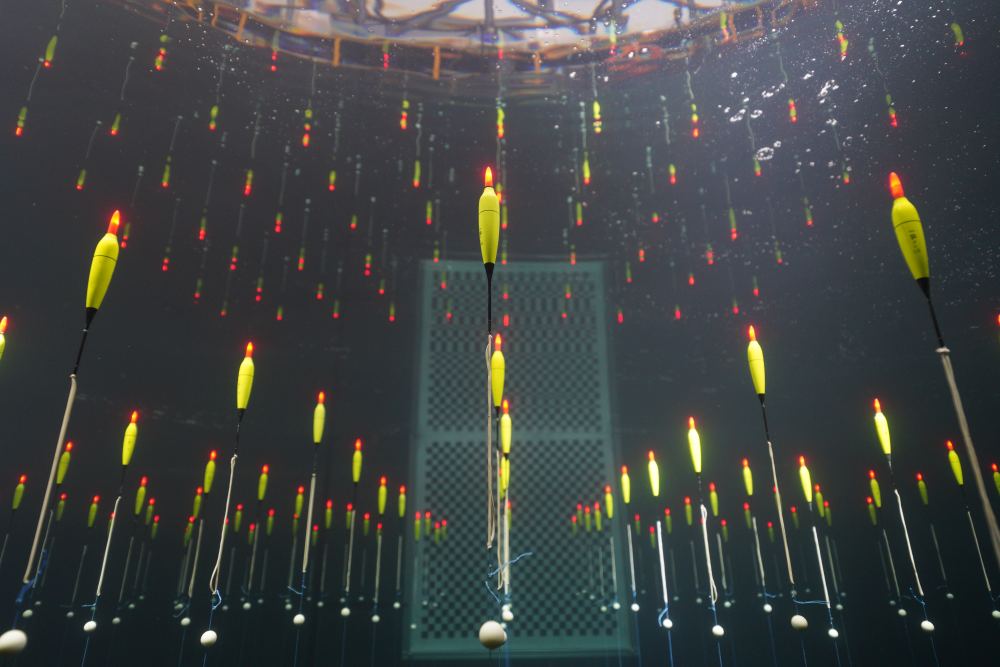Neutrinos are tricky little blighters that are hard to observe. The IceCube Neutrino Observatory in Antarctica was built to detect neutrinos from space. It is one of the most sensitive instruments built with the hope it might help uncover evidence for dark matter. Any dark matter trapped inside Earth, would release neutrinos that IceCube could detect. To date, and with 10 years of searching, it seems no excess neutrinos coming from Earth have been found!
Neutrinos are subatomic particles which are light and carry no electrical charge. Certain events, such as supernovae and solar events generate vast quantities of neutrinos. By now, the universe will be teeming with neutrinos with trillions of them passing through every person every second. The challenge though is that neutrinos rarely interact with matter so observing and detecting them is difficult. Like other sub-atomic particles, there are different types of neutrino; electron neutrinos, muon neutrinos and tau neutrinos, with each associated with a corresponding lepton (an elementary particle with half integer spin.) Studying neutrinos of all types is key to helping understand fundamental physical processes across the cosmos.
The IceCube Neutrino Observatory began capturing data in 2005 but it wasn't until 2011 that it began full operations. It consists of over 5,000 football-sized detectors arranged within a cubic kilometre of ice deep underground. Arranged in this fashion, the detectors are designed to capture the faint flashes of Cherenkov radiation released when neutrinos interact with the ice. The location near the South Pole was chosen because the ice acts as a natural barrier against background radiation from Earth.
Using data from the IceCube Observatory, a team of researchers led by R. Abbasi from the Loyola University Chicago have been probing the nature of dark matter. This strange and invisible component of the universe is thought to make up 27% of the mass-energy content of the universe. Unfortunately, dark matter doesn't emit, absorb or reflect light making it undetectable by conventional means. One train of thought is that dark matter is made up of Weakly Interacting Massive Particles (WIMPs.) They can be captured by objects like the Sun leading to their annihilation and transition into neutrinos. It's these, that the team have been hunting for.
The paper published by the team articulates their search for muon neutrinos from the centre of the Earth within the 10 years of data captured by IceCube. The team searched chiefly for WIMPs within the mass range of 10GeV to 10TeV but due to the complexity and position of the source (the centre of the Earth,) the team relied upon running Monte Carlo simulations. The name is taken from casino's in Monaco and involves running many random simulations. This technique is used where exact calculations are unable to compute the answer and so the simulations are based on the concept that randomness can be used to solve problems.
After running many simulations of this sort, the team found no excess neutrino flux over the background levels from Earth. They conclude however that whilst no evidence has been found yet, that an upgrade to the IceCube Observatory may yield more promising results as they can probe lower neutrino mass events and hopefully one day, solve the mystery of the nature of dark matter.
Source : Search for dark matter from the centre of the Earth with ten years of IceCube data
 Universe Today
Universe Today


